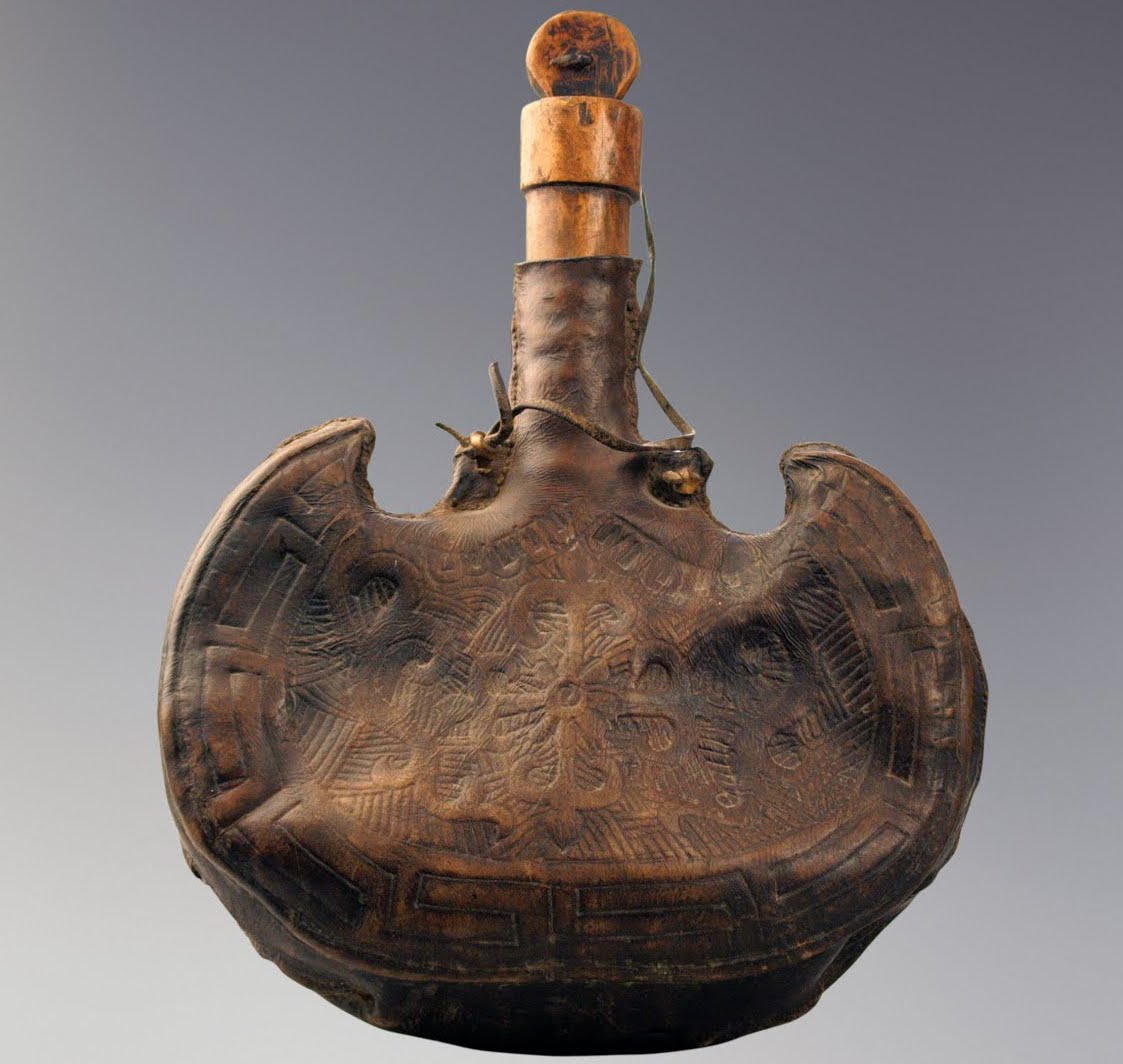The Mongolian hide and leather arts are defined by the various ways by which the hides of animals are prepared. After slaughtering a number of their herds and flocks for winter consumption, Mongolians have traditionally salted raw skin and hide, and cut off their ends. The skin and hide can thus be cut in various ways depending upon the appropriate needs, such as: First, the hair from a slice of hide can be stripped off, after which the hide can be tanned and made into a strap or belt. Second, thin pieces of skin can be smoked and made into pieces of sting or lasso. Third, moist pieces of hide can be cut into strings and then used to weave into a basket or other such vessel. Fourth, the skin and hide is processed according to various techniques and then used for a variety of other cultural needs.
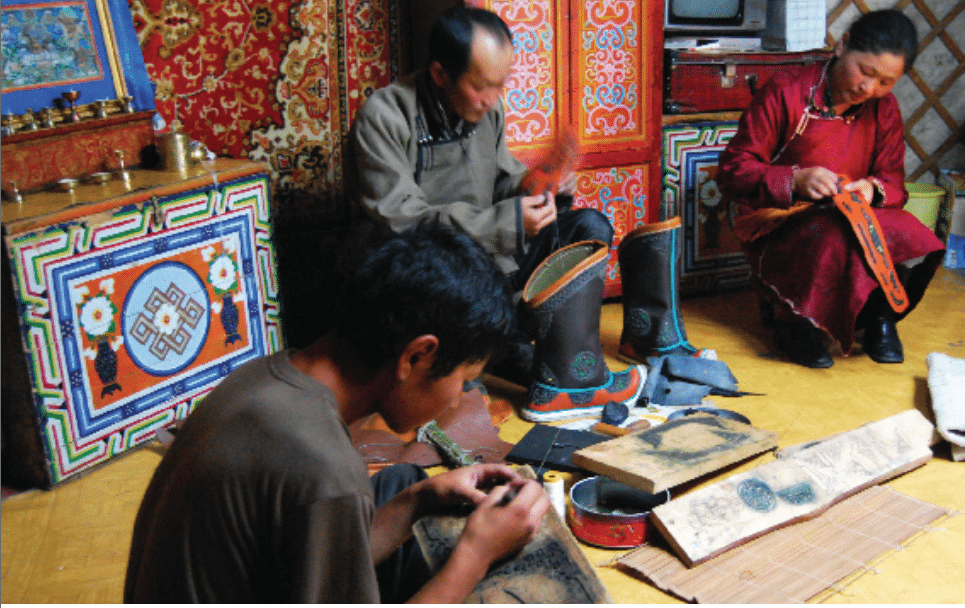
Sking Painting
Pictures are drawn and painted on stretched and dried skins. These are usually very ancient method in Mongolian hide and leather crafts.
Mongolian Hide and Leather Embossing
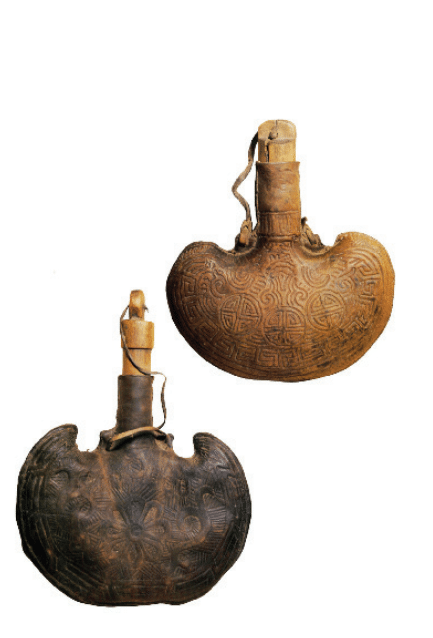 Mongolian leather and hid crafts are created by soaking leather and em bossing it according to the creating figure, using a traditional embossing tool made of cattle and deer horns. After this, it is smoked in a special kiln and various leather straps are stitched on as necessary.By hide embossing, Mongolians make a variety of containers, including canteens, flasks and flagons, which have capacities ranging from 100 grams to 100 litres. They went by a variety of names, including khökhüür (milk skin), eemtei (hide flask with embossed sides), khetevch (flint-case), khönög (large-hide skin), borvi (small-hide skin),tüngertseg, and dashmag (hide flask).
Mongolian leather and hid crafts are created by soaking leather and em bossing it according to the creating figure, using a traditional embossing tool made of cattle and deer horns. After this, it is smoked in a special kiln and various leather straps are stitched on as necessary.By hide embossing, Mongolians make a variety of containers, including canteens, flasks and flagons, which have capacities ranging from 100 grams to 100 litres. They went by a variety of names, including khökhüür (milk skin), eemtei (hide flask with embossed sides), khetevch (flint-case), khönög (large-hide skin), borvi (small-hide skin),tüngertseg, and dashmag (hide flask).
Hide Flask-Masking
The and stamped with designs. This flask is made from the neck or back dašmag or the hidden flask is a peculiar bag which is embossed part of the hide of an ox or cow without a warbler’s hole. In order to make this flask, the flesh, meat and hair are scraped off and stretched out with tools. Before the hide becomes dry, it is cut according to an appropriate design; the cut hide is then soaked and stitched with a whipstitch. After careful stitching, the hide-flask is filled with sands and then branded with shapes resembling those given to domesticated animals. These shapes, made into the neck and sides of the flask, include the zooson khee (circular coin-shaped pattern, representing wealth), üülen khee (cloud-shaped pattern), khos khee (a pair of signs), guramsan zagas (three fish), ölzii utas (sign of luck), tümennasan khee (sign of great luck), the sign of the sun and moon, ugalz (spiral pattern of flowers), khaan buguivch (khaan’s bracelet), and khüi modon khee (sign of an umbilical chord).
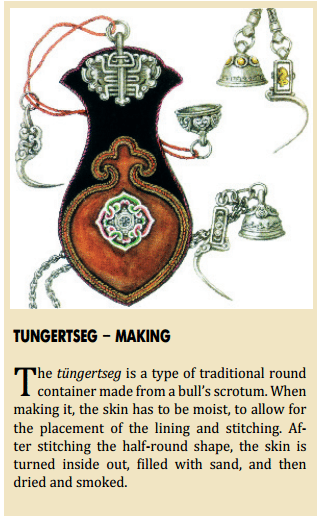
Rough leather, Shagreen and Yurft Crafts
The Mongolian boots, saddle flaps, stirrup flaps, tops of the Mongolian stockings, pouches for snuff, chibouk’s case, knife-sheath, saddle bag and quiver are all decorated with ornamental stitches made of rough leather, chamois, shagreen and yuft. In addition, the straps used to fasten the top parts of Mongolian wrestlers’ boots are made from skin, hide and yuft, and are also embossed and stitched. In order to make these products, the skin or hide is moistened slightly and placed on a wooden mould. It is then scraped with the horns of antelope, ox, or goat until it is grooved and fitted into the wooden mould, after which it is smeared with glue and filled with narrowly twisted paper or thickly twisted cotton. When the cast is dried and pulled out of the mould and laid out on a flat board, the spaces for the stitch perforation should be visible. The notches are cut into the hide with a chisel or small sharp knife. The patterned model can then be placed on green shagreen, after which they are glued and stitched.
Mongolian Hide and Leather Knotting
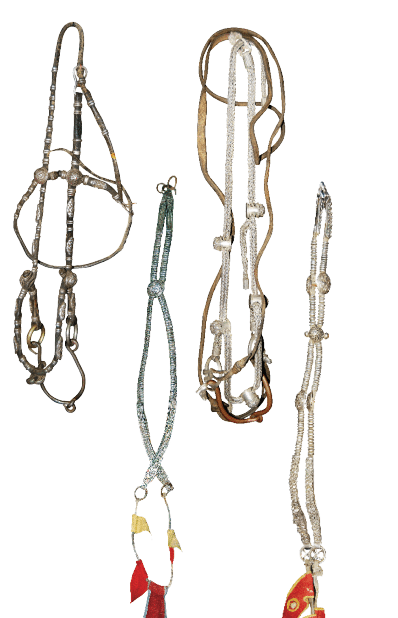
The leather knotting process includes tanning, cutting, knotting, and smoking the hide and skin. Mongolians make a number of different types of ropes and other accessories by leather knotting, including lassos, hobbles, bridles, halters, cruppers, saddle straps, breast-straps, saddle fasteners, girths, bow straps, and other such items.The traditional accessories made by leather knotting are durable enough to endure use for even several generations.

